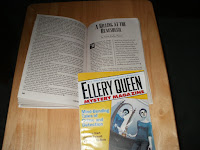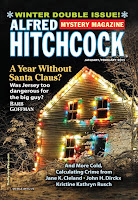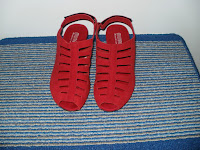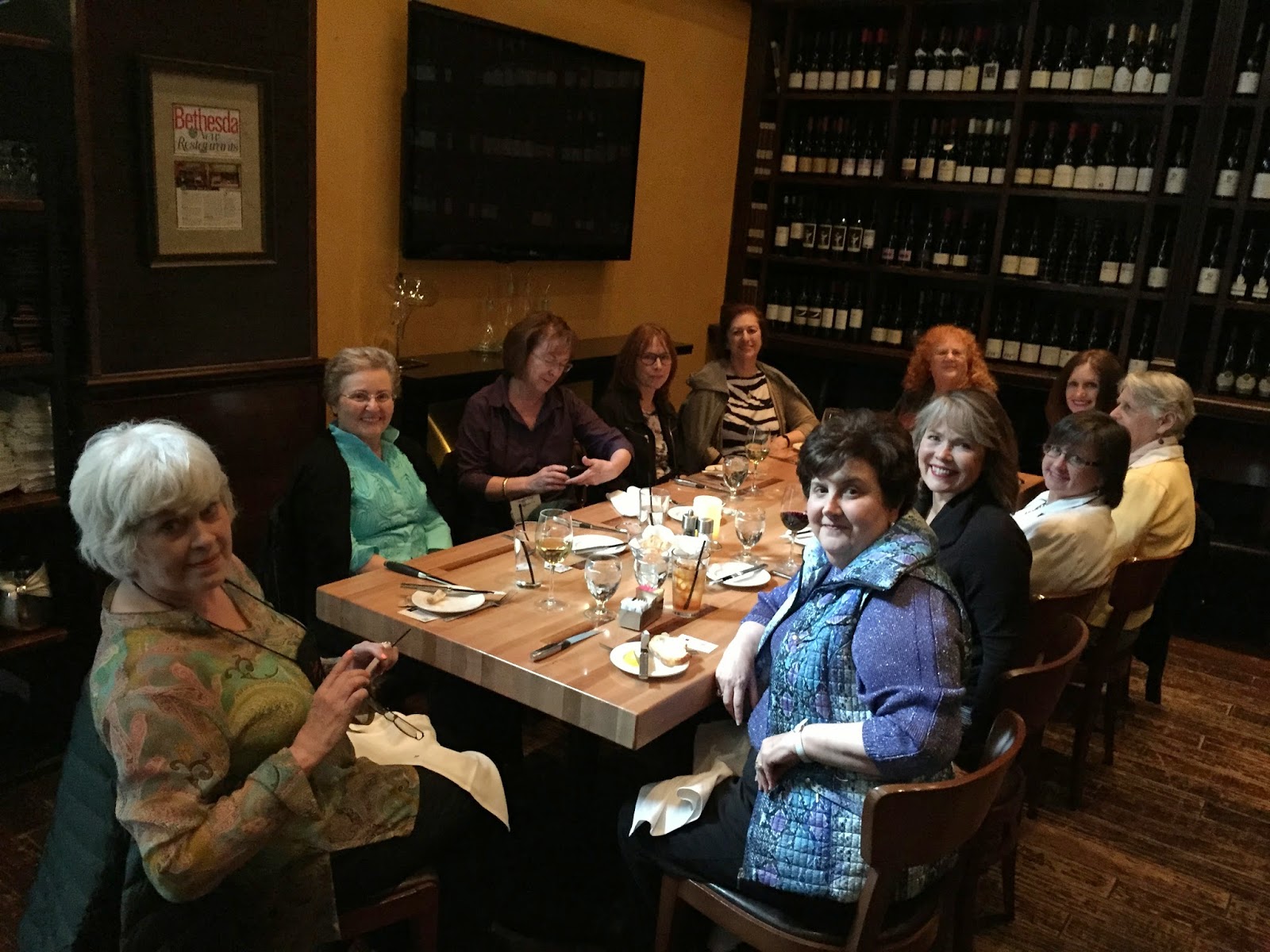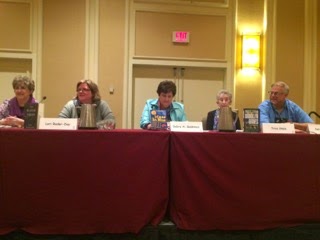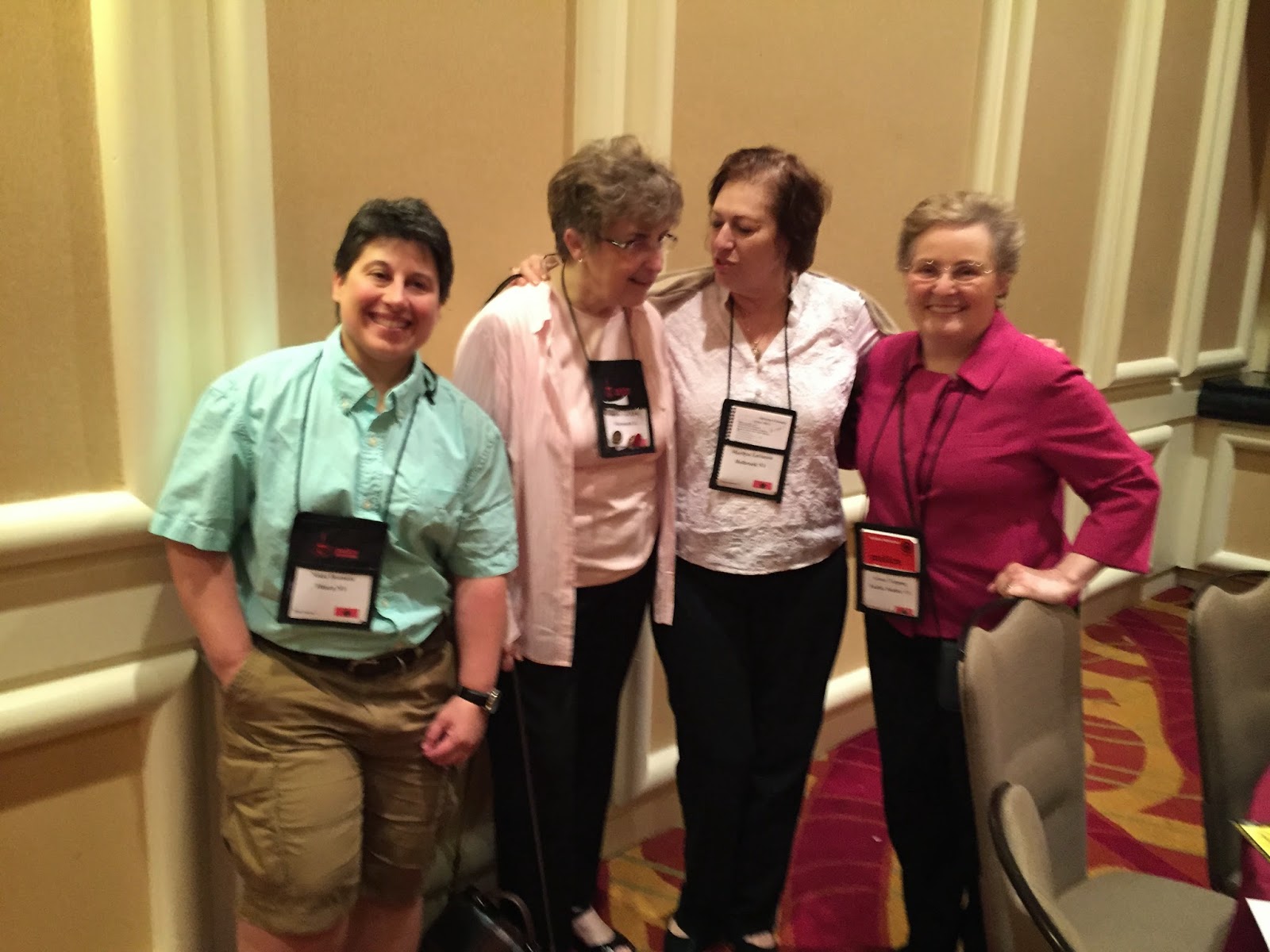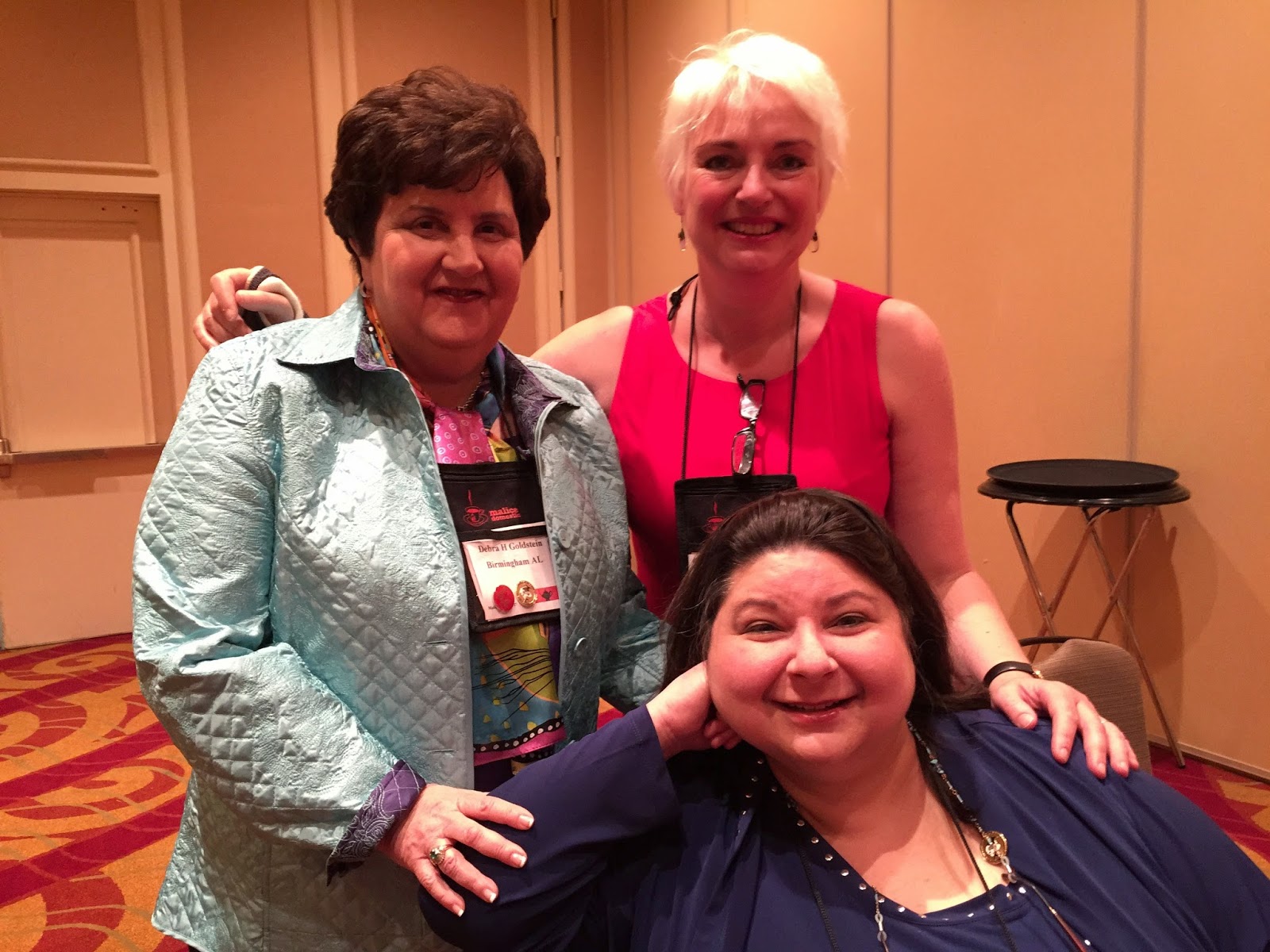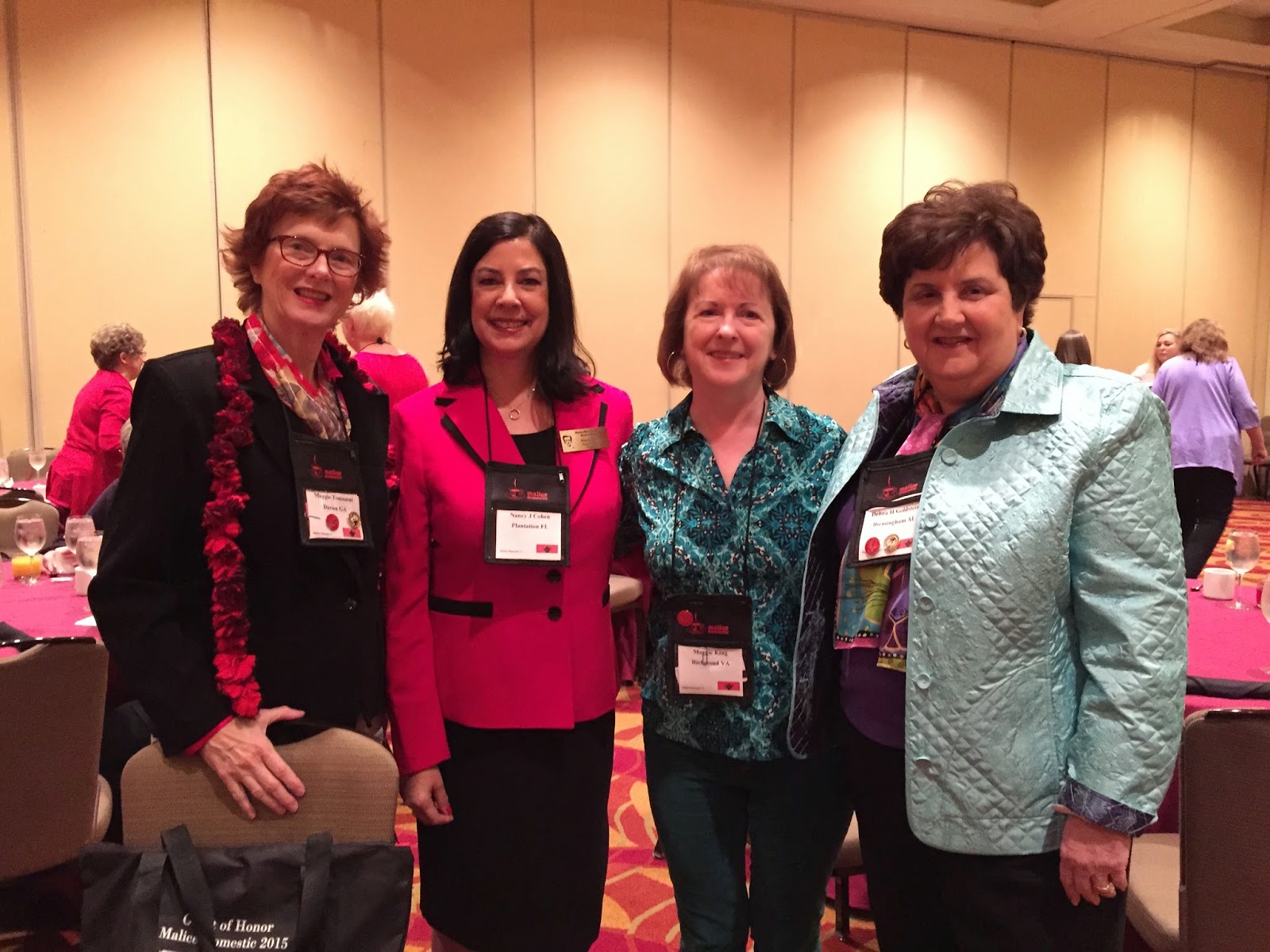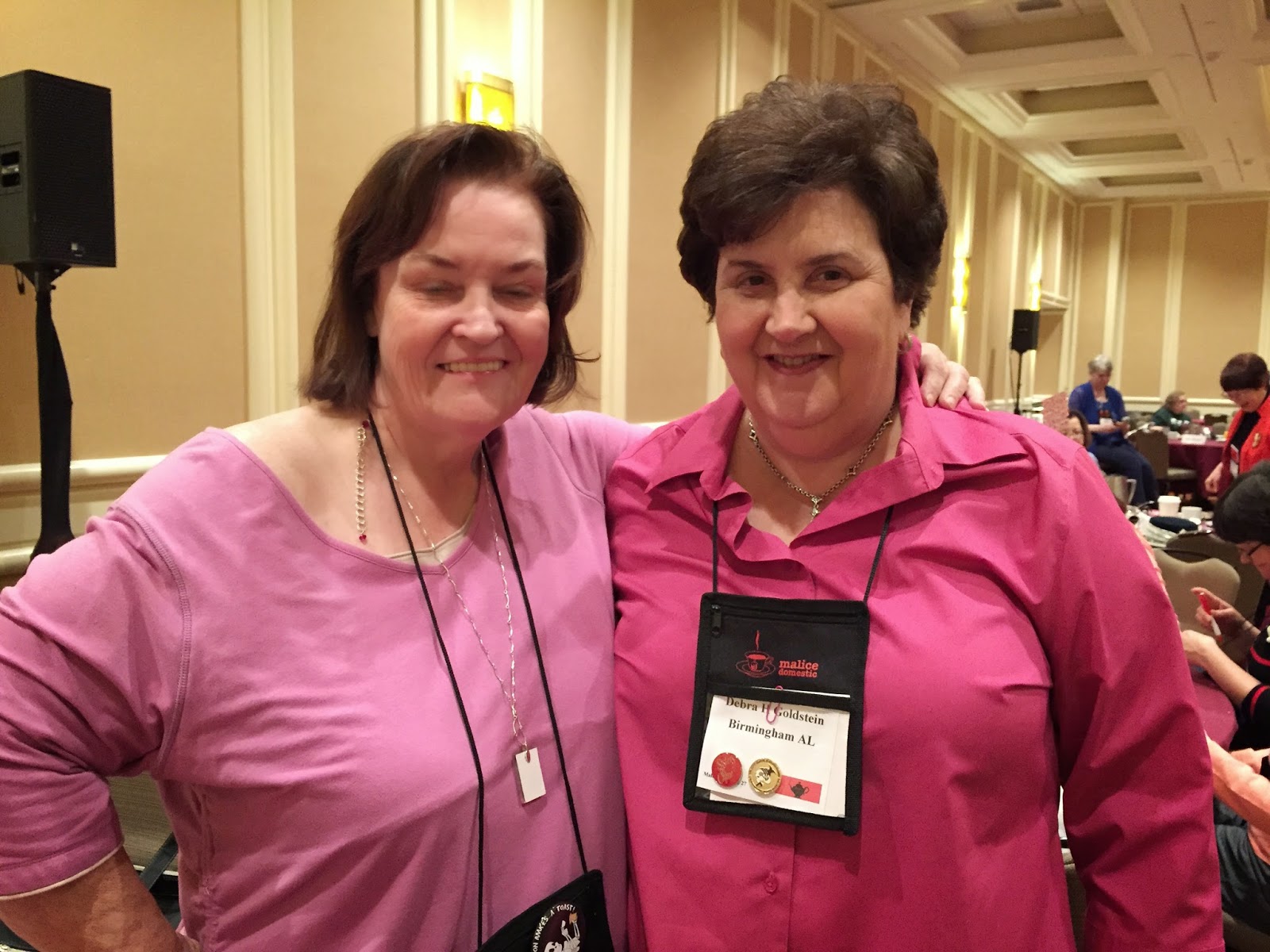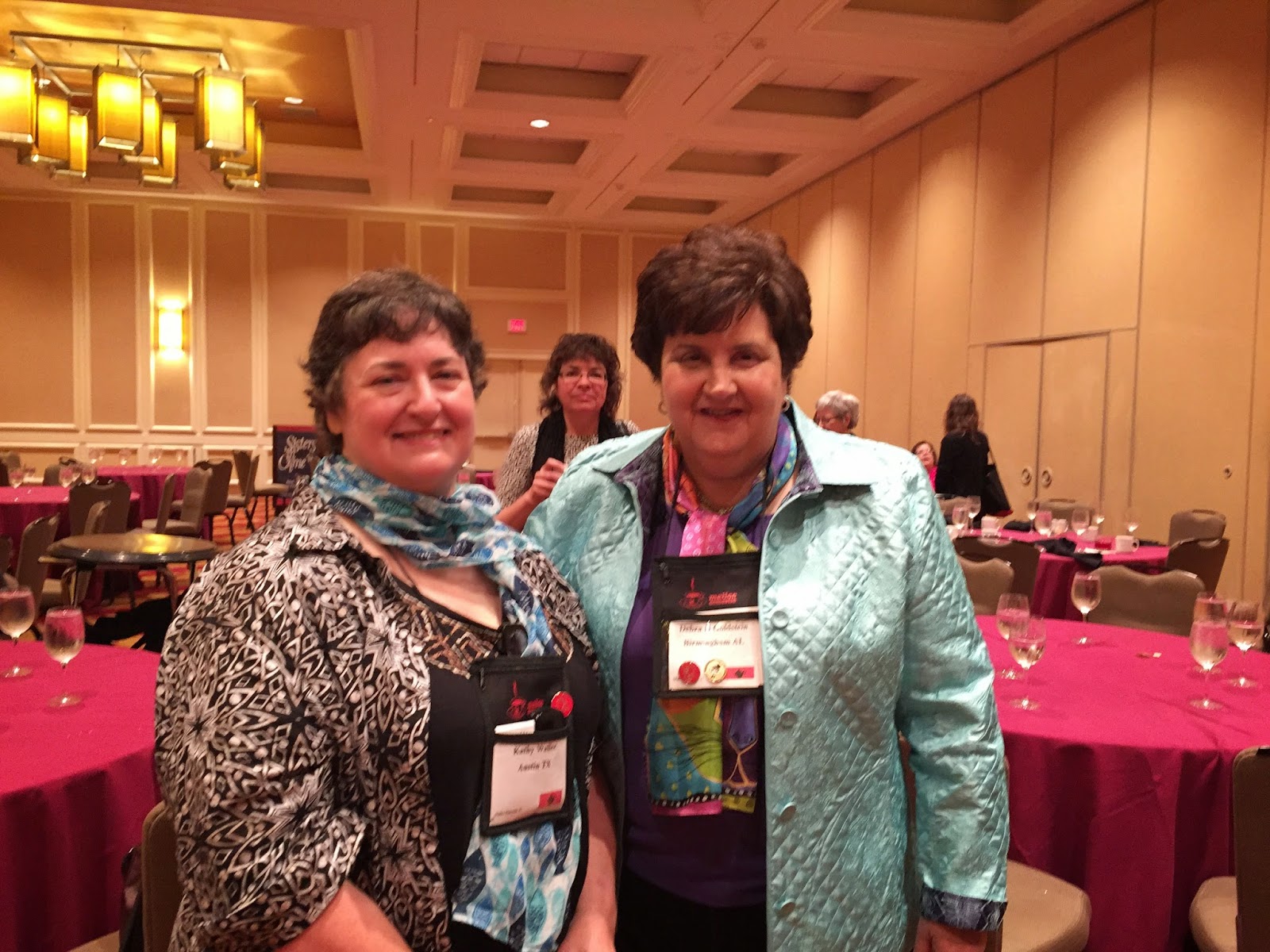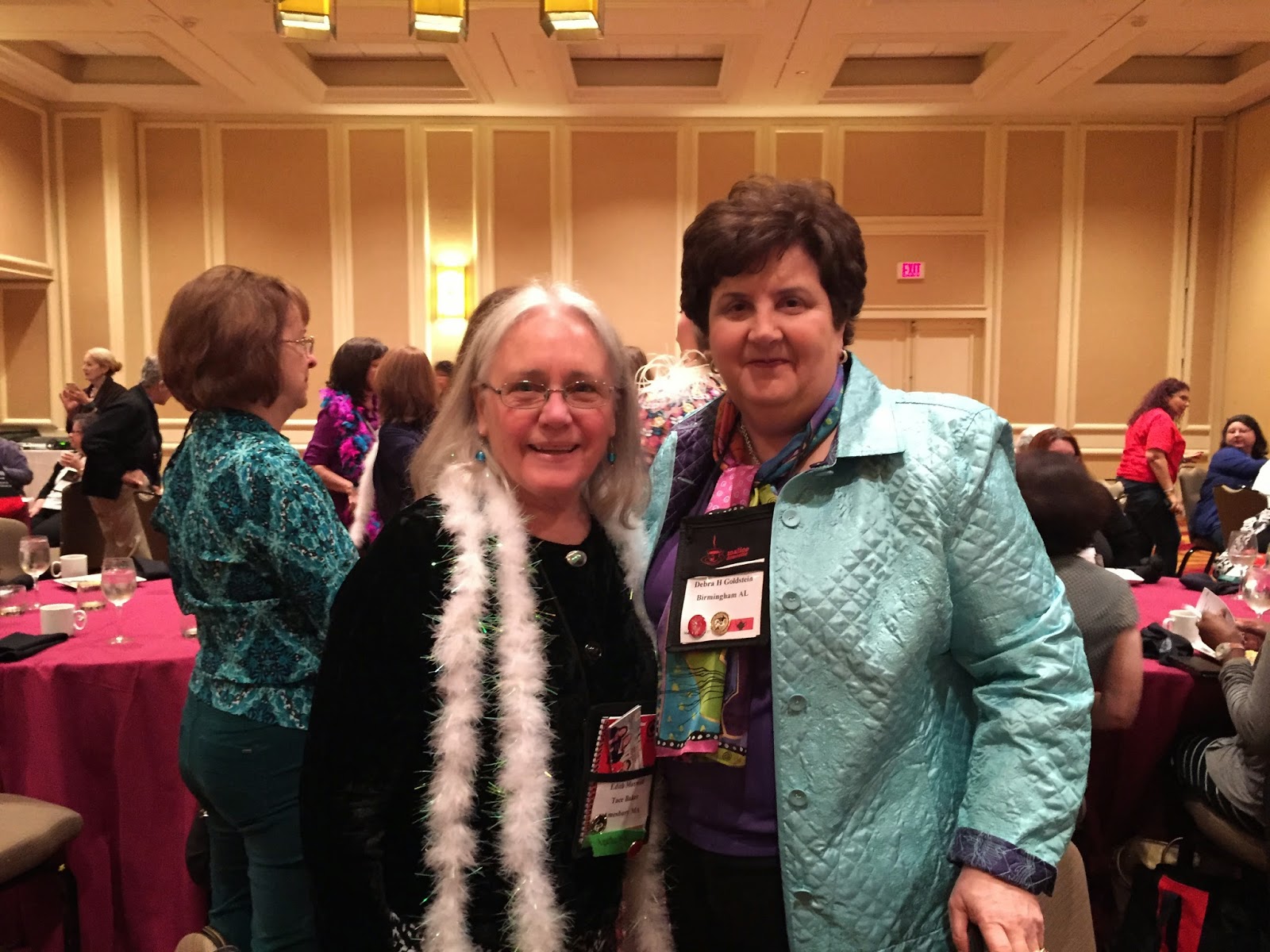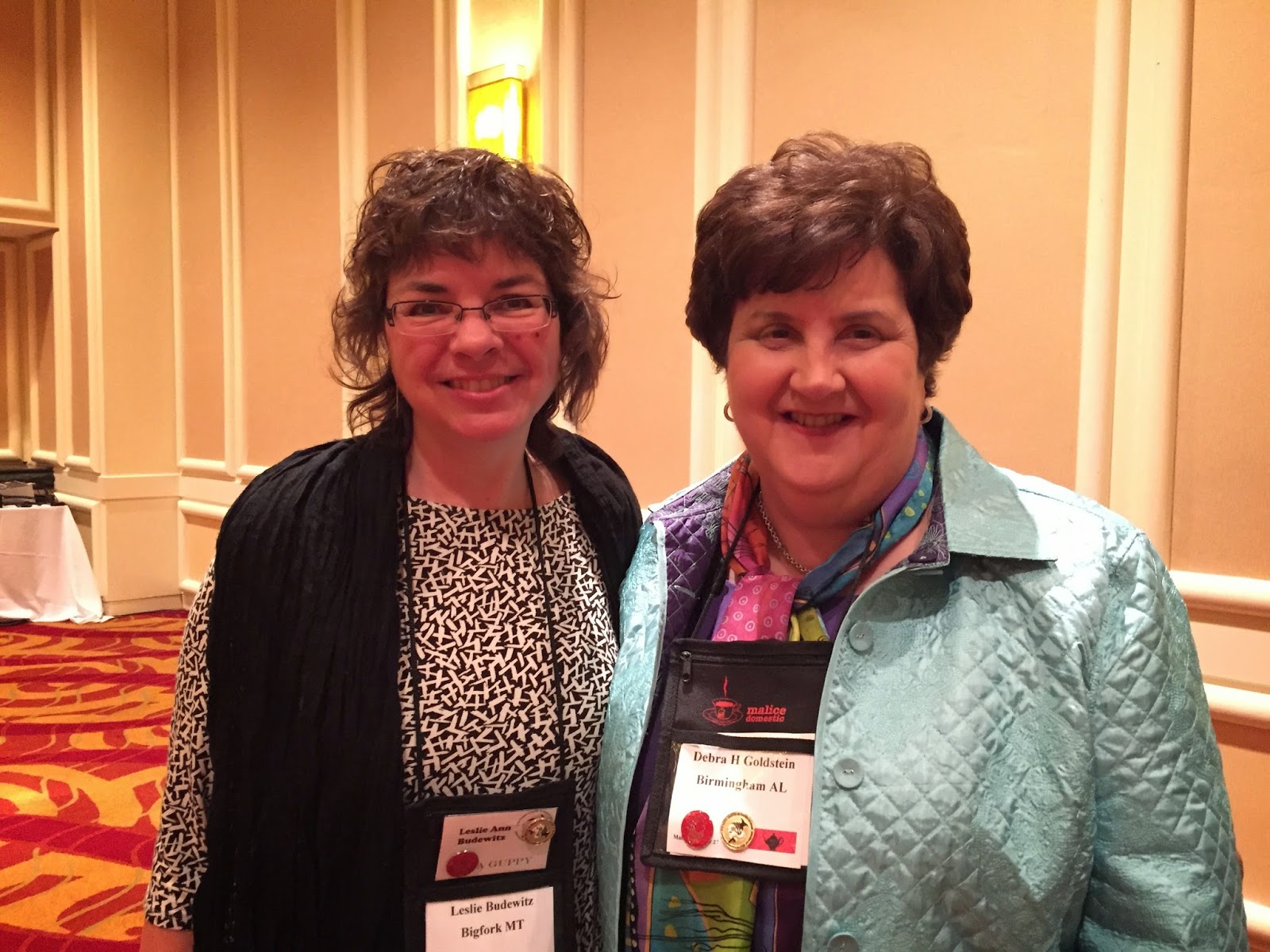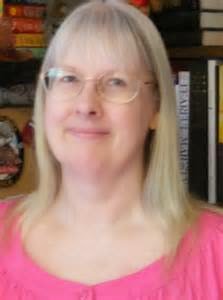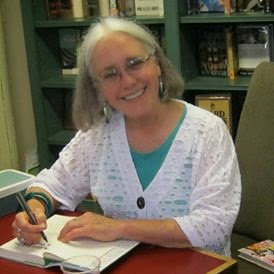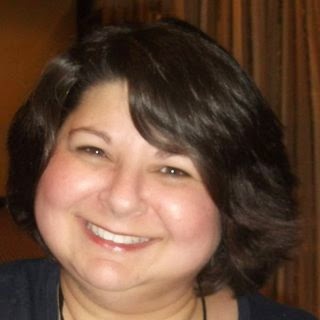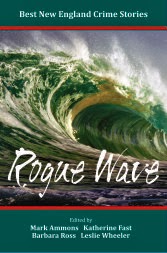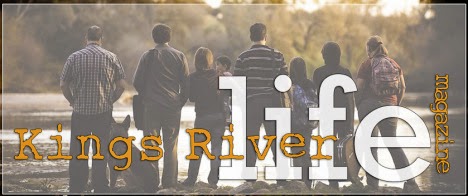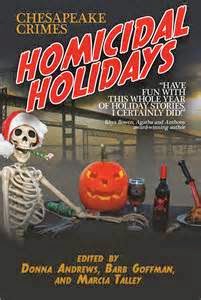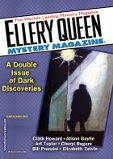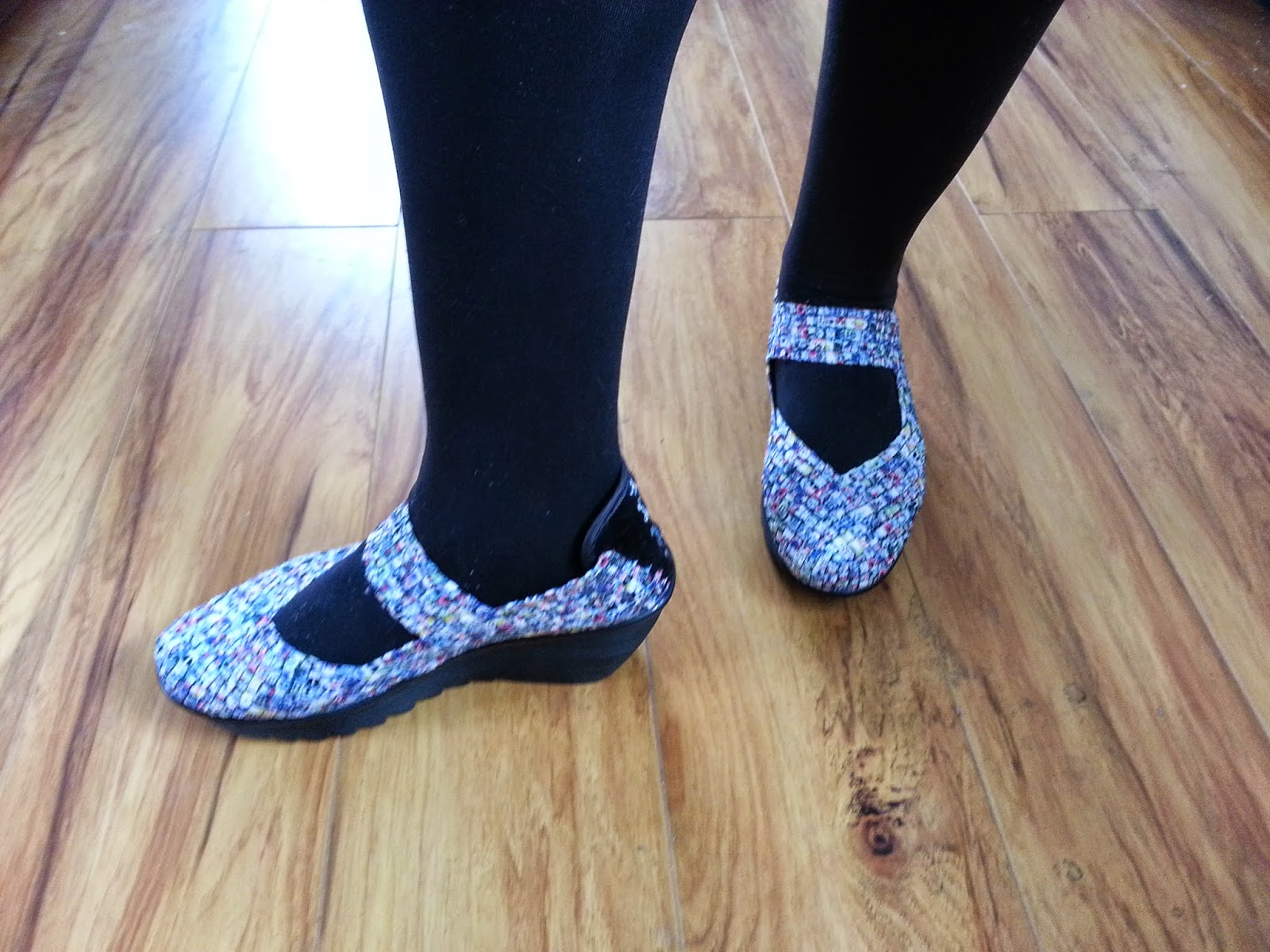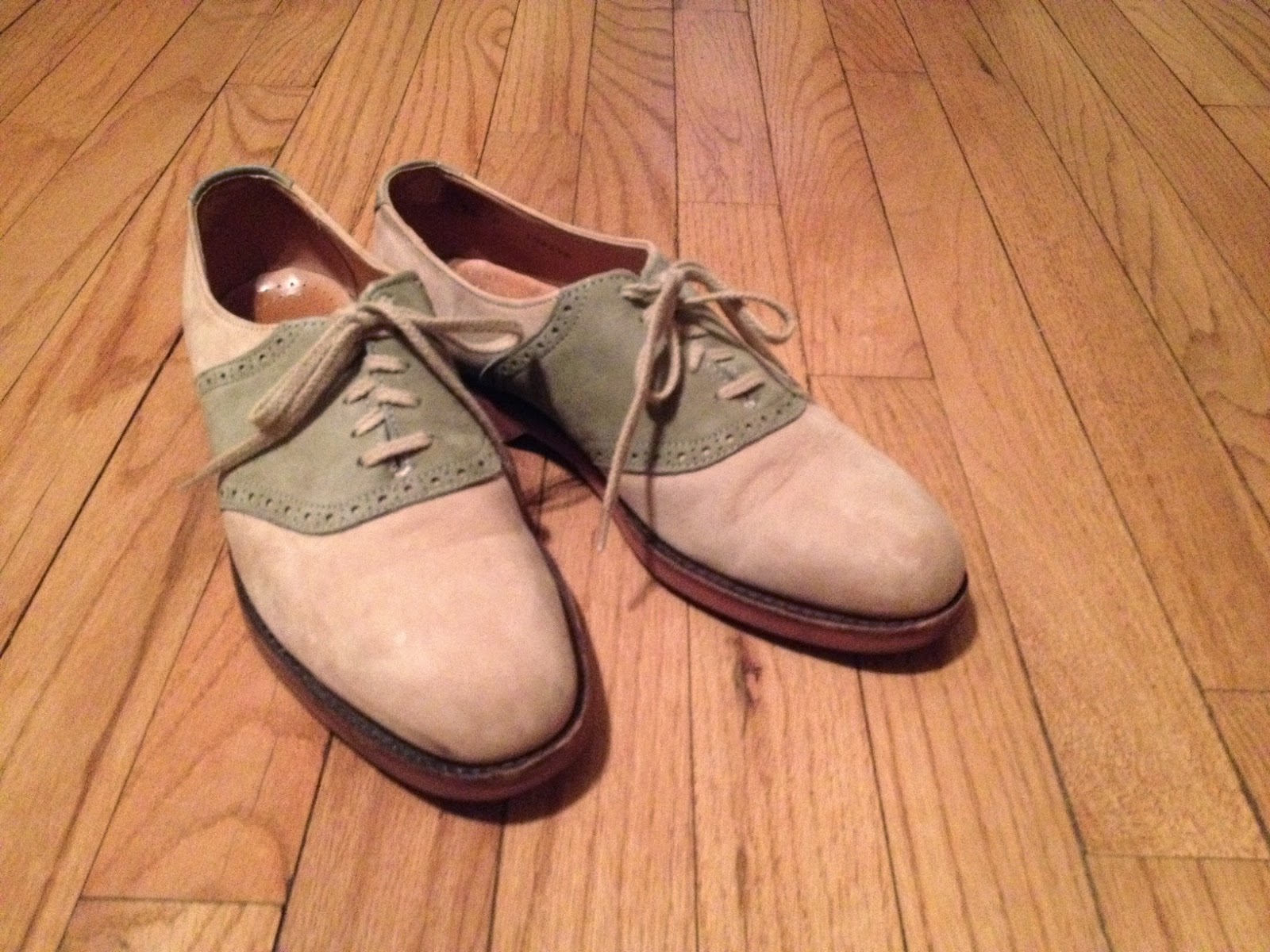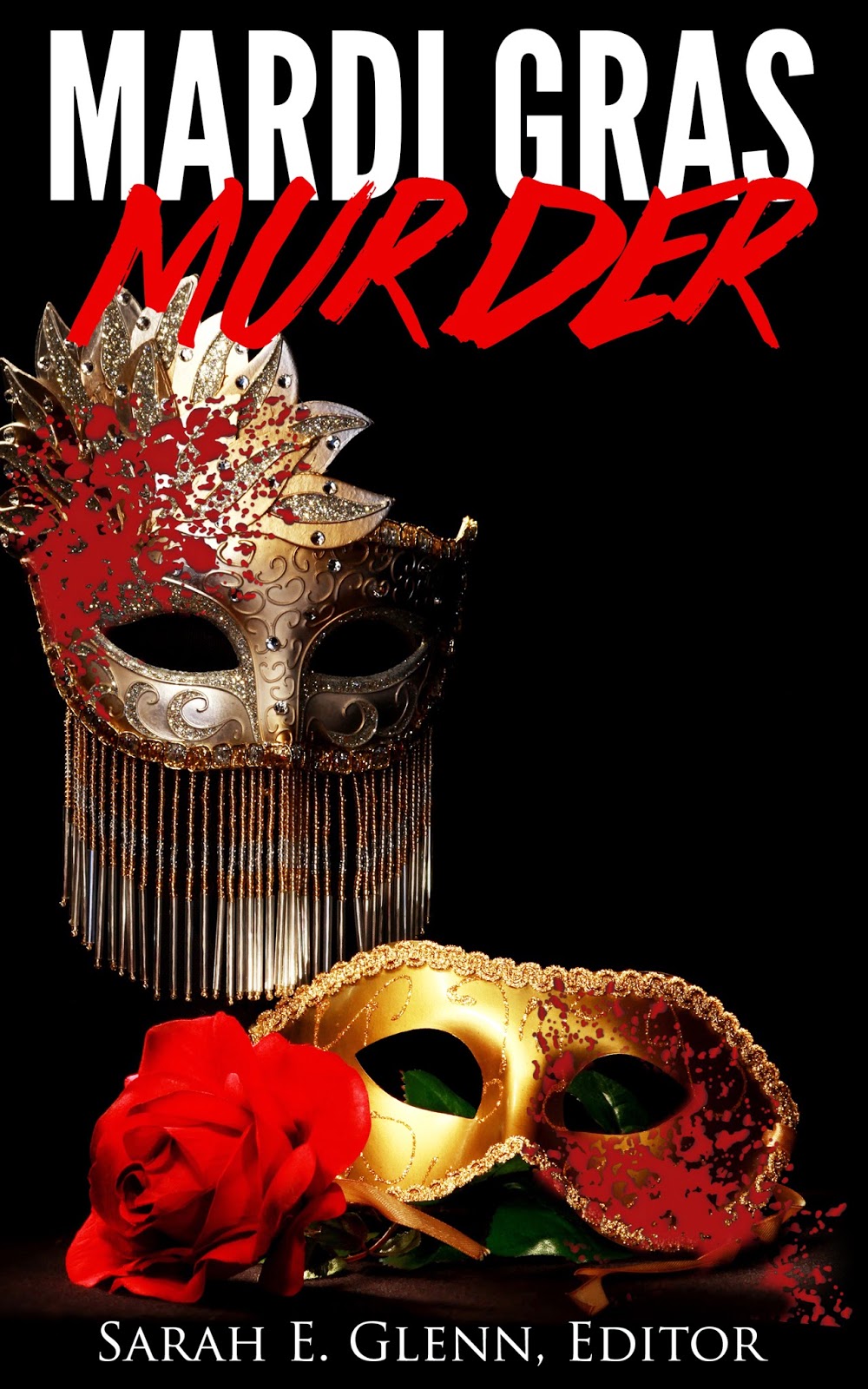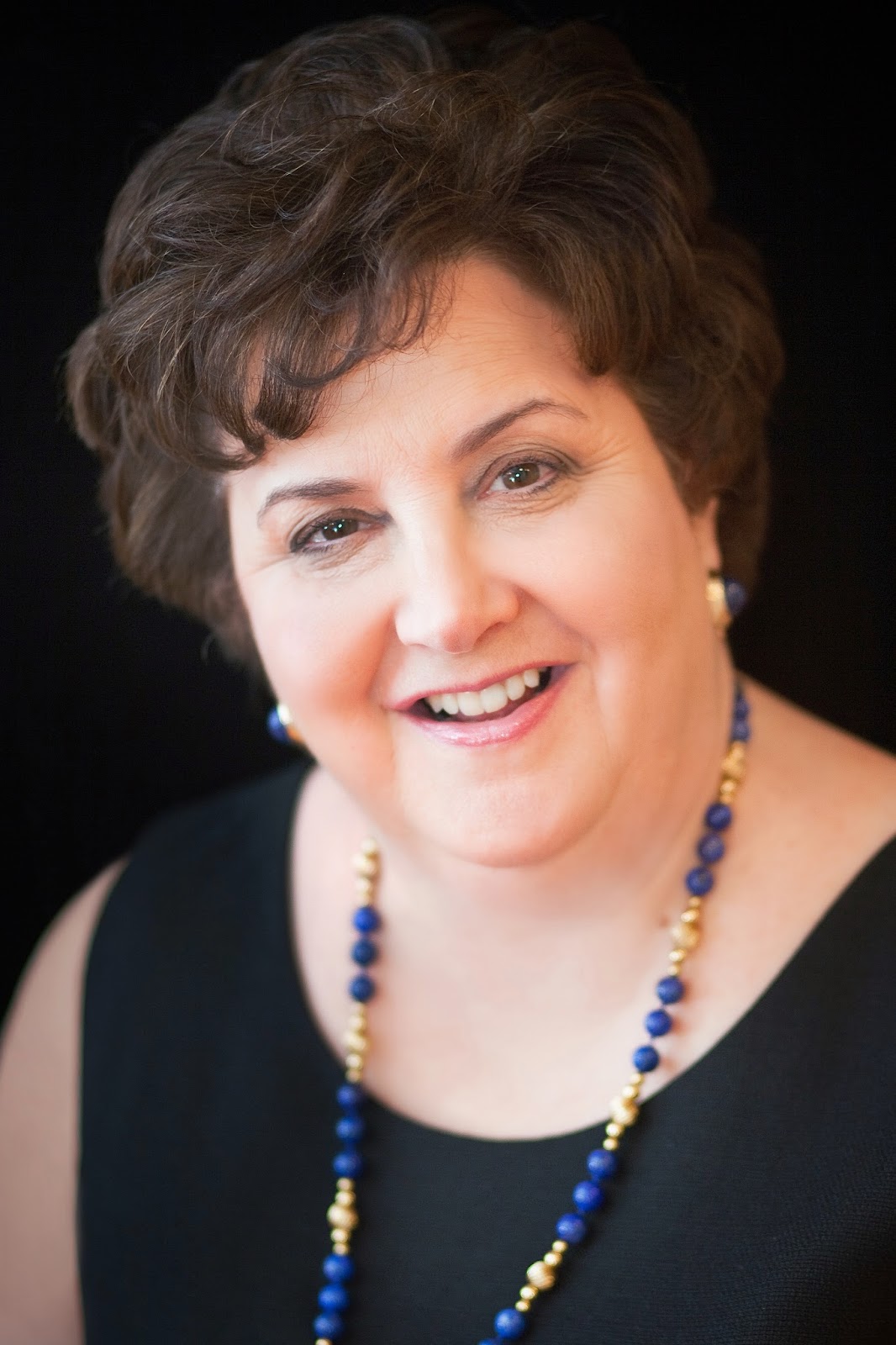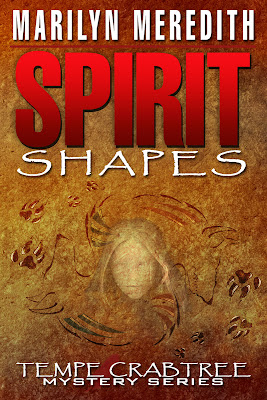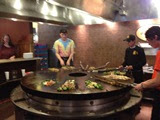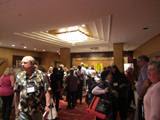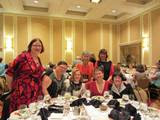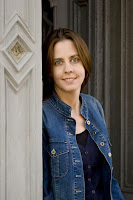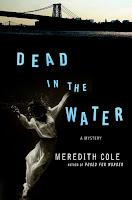Meet the Authors of the 2015 Agatha Best Short Story Nominees!
writing excellence is recognized by the Agatha awards. This year’s nominees for
Best Short Story are:
by B.K. Stevens (Alfred Hitchcock Mystery Magazine, March 2015)
Poor” (PDF) by Harriette Sackler, History & Mystery, Oh My (Mystery
& Horror, LLC)
“A Killing at the
Beausoleil” (PDF) by Terrie Farley Moran (Ellery Queen Mystery Magazine,
Nov. 2015)
“A Questionable Death” (PDF) by Edith Maxwell, History
& Mystery, Oh My (Mystery & Horror, LLC)
“A Year Without Santa
Claus?” (PDF) by Barb Goffman (Alfred Hitchcock Mystery Magazine,
Jan./Feb. 2015)
these stories, if you haven’t already. We are so fortunate to have with us
today B.K. Stevens, Harriette Sackler, Terrie Farley Moran, Edith Maxwell,
and Barb Goffman.
All are not only fabulous writers, but also delightful people. Thanks, Bonnie,
Harriette, Terrie, Edith, and Barb for stopping by to share your work and
thoughts with us!—Paula Gail Benson
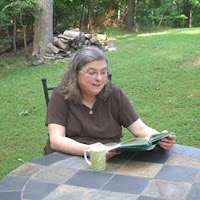 |
| B.K. Stevens |
I spend a lot of time planning, especially if I’m working on a whodunit and
have to make sure all the evidence will come together. I may or may not make some
sort of outline, but I almost always take a lot of notes on the
computer—exploring various plot possibilities, planning clues, writing profiles
of characters and describing their backstories, and so on. Usually, my notes
are much longer than the final story; for the last story I submitted to Alfred Hitchcock’s Mystery Magazine,
they’re over three times as long. I like to have a clear idea of where I’m
headed before I begin to write, even though I usually end up making lots of
changes during drafting and revising. I draft fairly quickly and try (often not
successfully) to resist the temptation to revise while I’m drafting. Once the
first draft is done, I put it aside for at least a week and then spend a long
time revising and editing. For me, revising always involves a lot of cutting—my
first drafts are always much too long. I try to have at least two projects in
progress at all times. That way, if I get stuck on one, I can put it aside for
a while and focus on the other.
I’m involved in many different projects, I write when I can. Once I have a
kernel of a story idea in my mind, I put it down on paper. I do seem
to accomplish more when I’m under deadline. I’m a great procrastinator.
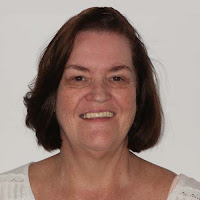 |
| Terrie Farley Moran |
seven days a week. I get up every morning leave the house and do some kind of
exercise (walking, visit the gym, water aerobics or bike ride) then I come home
and sit at the keyboard. I write until I break to eat lunch and watch a few
minutes of news. Then I go back to the keyboard until about six o’clock when I go
out for a walk or a bike ride. If I am falling behind on a deadline I write
after dinner until bedtime. Under the heading “writing” I include all writing
related chores: editing, research, website, blog posts, etc. And, of course, I
still try to have an actual life!
fiction writer now and I treat it like a job. I’m always up by six AM and am
working by seven. Whether I’m working on the first draft of a book, a short
story, or revision, I do my creative work before noon. Then I head out for my
brisk long walk—often plotting the next day’s
scene as I go – and reserve the afternoon for admin jobs like writing blog
posts, arranging author events, and other items of author business. So far it’s
working—I have three multi-book contracts, so
I have to write three books a year, plus one or more short stories.
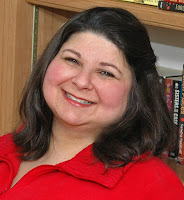 |
| Barb Goffman |
GOFFMAN: When I come up with a story
idea—be it organically, or more often, in response to a story call—and don’t
have the time to write the story immediately (that’s ninety-nine percent of the
time), I’ll write some notes about the idea: the beginning, the end, maybe a
bit of dialogue or the voice I hear in my head. Then those notes will sit,
sometimes for a long time, until I find the time to write that story. I prefer
to write in large chunks rather than a few minutes a day, so I can go a long
time between writing stretches when my day job keeps me busy.
start writing, I’ll write a few paragraphs, then read them out loud, revising
them before I go forward. Any time I take a break or get stuck, I’ll re-read
the last few paragraphs out loud, trying to get a feel for what comes next
(and, of course, revising as I go). While I’m writing a story, I may also sleep
on it, take a short drive, or a hot shower, trying to think on it—consider if I
have plot holes, how I could spice up the dialogue, create a plot twist, and
more. Once I finish, I try to let the finished story sit for a few days (or
longer if I have the time) before I read it again and try to spot and fix any
problems. And then I send the story out to a trusted friend or two for feedback
before I revise once more and then send the story out for submission. (Though I
must admit I’m often so eager to see what my friends think that I may send a
story to them before I’ve cleaned it up perfectly. Letting the story sit for a
few days is hard, even though I know that’s the best way to proceed. I keep
trying to reign myself in. It’s a work in progress.)
a short story?
STEVENS: Generally, it takes a
long, long time. Once in a while, I’ll get an idea, do only a little planning,
and sit down and write the story straight through. That doesn’t happen often,
though—maybe four or five times in the last thirty years, usually for flash
fiction stories, and even then I’ll spend days cutting and revising. Most of
the time, depending on the length and complexity of the story, the whole
process takes several weeks or several months. (But remember, I work on more
than one project at a time.) If I’m not satisfied with a story, I may put it
aside for months or even years until I think of a way to fix it. Right now,
I’ve got a half-written story that’s been sitting in a folder for at least
three years, waiting until I come up with a better murder method.
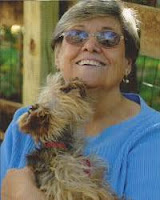 |
| Harriette Sackler |
SACKLER: I’m not one to churn out
stories in a short time. It takes me a while from conception to finished story.
But that feels fine to me.
MORAN: I am a very slow writer and writing
is a very contrarian occupation. If I think a story is going to take a long
time to write, it usually gets itself down on paper without a problem. If I
expect the story to be a quick slam dunk, it generally turns out to be
torturous to write. Basically when I see a call for submissions that interests
me, or when I get an idea for a potential story, I tend to think about it for a
good long while. Once I think of a direction the story could take, I begin to
research anything that could possibly relate. I do far more research than
necessary because…I love research. Then I think some more. While all this
thinking and research is going on I am generally working on another project or
two. Eventually I write the story. I don’t outline, I just plunge into it. Of
course if there is a deadline that sets the time frame.
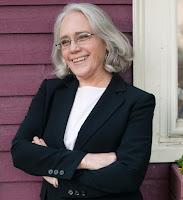 |
| Edith Maxwell |
MAXWELL: That really varies. Once the
story emerges in my head, sometimes I can talk it through on my hour walk (see
previous question, and yes, I’m the crazy author lady who talks out loud to
herself on the rail trail). Then I take a day or two to write the first draft.
But the finishing, editing down, and making sure it works can take a lot
longer. And with historical stories set in a real location, there’s always more
research to be done, too.
GOFFMAN: It varies. If I get a detailed
idea, I might finish the first draft in a few days. (That’s how I prefer to
proceed. I like to know the beginning, a few high points, and the end before I
start writing. It makes the process easier.) But sometimes I’ll hear a voice in
my head—a story’s beginning—and I’ll start writing. I might write a couple of
paragraphs or a page or two, and then I’ll get stuck, really stuck, because I
have no plot to go with the voice. Those stories can become big problems
because I’ve found my writing flows best when I come up with conflict first and
let character react to it, and the plot unfolds from there. When characters
show up first without the conflict—those are my problem children.
what happened with my nominated story “A Year Without Santa Claus?” I saw a
call for whodunit stories set in New Jersey. I woke up soon thereafter with the
main character’s voice in my head. I wrote the first page, and that was all I
wrote on that story—for years. Whodunits are hard to write (at least for me). I
needed a mystery and suspects and all that good stuff. I needed a plot in which
my character could solve the crime when the police couldn’t. And I had none of
that. Perhaps three years later, one morning out
of the blue, I had an idea in the shower—a plot that worked. I hurried to my
computer (thank goodness I had the time to write that day and week) and banged
out a solid draft within a few days. So sometimes it takes a few days to come
up with an idea and write a story. Sometimes the planning can take a few years
and then the writing a few days. It’s nice when it all comes together fast.
your story wear to the Agathas banquet?
sensible shoes, because I always wear boring, sensible shoes. Gwen seems like
the type to wear boring, sensible shoes, too. Considering the way the story
ends, though, this time she might just wear stilettos.
important priority. Gone are the days of high heels and pointed toes.
strappy and low-heeled shoes.
red shoes. I think Sassy and Bridgy would wear similar bright red shoes but with
fewer straps and a higher heel.
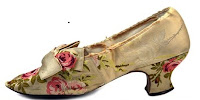 EDITH MAXWELL: I’m SO not a shoe person. And my Quaker
EDITH MAXWELL: I’m SO not a shoe person. And my Quakermidwife Rose Carroll from “A Questionable Death” would wear something very
modest, as well. But her unconventional friend and co-conspirator, postmistress
Bertie Winslow? She loves fancy hats and colorful clothes. She’ll wear these
satin embroidered evening slippers to the banquet.
rocket skates from the Acme Company because when something goes wrong, he needs
to reach his destination fast. Plus, he loves Acme’s innovative products (how
many companies are selling rideable rockets?), despite his boss’s concerns
about defects.
shoes with a tiny heel because I believe in comfort.

